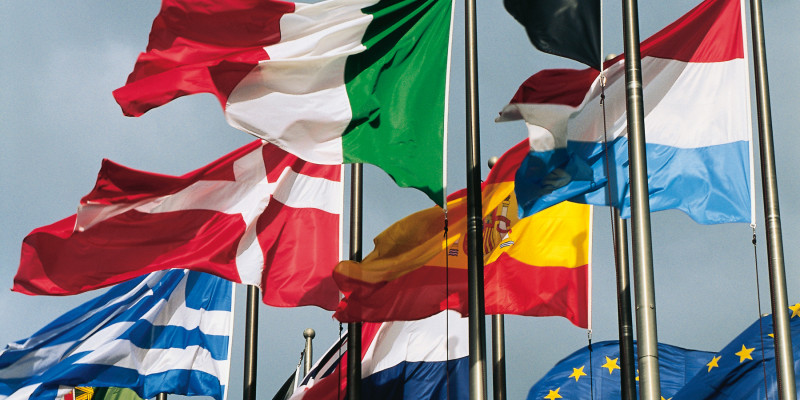Stockholm Convention
 Click to enlarge
Click to enlargeSource: CC Vision
The Stockholm Convention is an international environment agreement on the elimination or restriction of the production, use and release of persistent organic pollutants (POPs)
 Umweltbundesamt
Umweltbundesamt
 Click to enlarge
Click to enlargeThe Stockholm Convention is an international environment agreement on the elimination or restriction of the production, use and release of persistent organic pollutants (POPs)
Persistent organic pollutants are organic chemical substances that possess a particular combination of physical and chemical properties, including:
POPs are generated by chemical synthesis for commercial purposes. Alternatively, they may be unintentionally formed and released from thermal processes as a result of incomplete combustion or chemical reactions („unintentionally produced POPs“, uPOPs).
Given their properties, POPs represent a global problem which has to be tackled on an international scale. As a result, a number of international environment agreements were signed in recent years.
The Protocol on POPs was adopted on 24 June 1998 under the United Nations Economic Commission for Europe (UNECE) Convention on Long-Range Transboundary Air Pollution (CLRTAP). The POPs Protocol entered into force on 23 October 2003. More information can be found on the CLRTAP website.
The Stockholm Convention on POPs was adopted in May 2001 and entered into force on 17 May 2004. In contrast to the regional UNECE Protocol on POPs, the Stockholm Convention is an international treaty that aims to eliminate or restrict the production, use and release of POPs. More information can be found on the Stockholm Convention website.
The German Federal Republic was among the first parties to ratify both treaties, which were implemented into national law (BGBl II S. 803 vom 16. April 2002). In consequence, Germany is legally bound to fulfill its commitments to both treaties.
The European Union Regulation (EC) No 850/2004 aligns Community legislation with the provisions laid down in the international agreements on POPs. The Regulation goes beyond these provisions, for instance regarding the disposal of wastes containing POPs. The Regulation is legally binding and directly applicable in all Member States. More information can be found on the European Commission website.
The production and use of POPs that are listed in the Protocol on POPs and the Stockholm Convention is already prohibited in Germany. Therefore, the work of the Federal Environment Agency focuses on the identification of new POPs and their listing in both treaties.
Moreover, the Stockholm Convention stresses the importance of supporting developing countries and countries with economies in transition in the management of chemicals, for example by providing information on suitable alternatives to POPs.
Additional reporting obligations under the Stockholm Convention comprise the establishment of a national implementation plan and an action plan on measures to reduce POPs. The action plan includes an evaluation of current releases, the development of source inventories and release estimates. Its purpose is to assess the success of these measures.
The German Federal Republic has developed a POPs emissions inventory and gathered comprehensive information on the State of the Environment.
The chemicals of the Stockholm Convention are listed in annexes A, B and C.
The production and use of chemicals listed in Annex A must be eliminated: Aldrin, Chlordane, Chlordecone, Dieldrin, Endrin, Heptachlor, Hexabrombiphenyl, Hexa- and Heptabromdiphenyl ether, Hexachlorbenzene, Alpha Hexachlorcyclohexane, Beta Hexachlorcyclohexane, Lindane, Mirex, Pentachlorbenzene, Polychlorinated biphenyls (PCB), technical Endosulfan, Tetrabromdiphenyl ether and Pentabromdiphenyl ether, Toxaphene, Hexabromcyclododecane (HBCD).
The production and use of chemicals listed in Annex B must be restricted: DDT, Perfluoroctane sulfonic acid (PFOS) its salts and Perfluoroctane sulfonyl fluoride (PFOSF).
The unintentional production of chemicals in Annex C must be minimized and ultimately eliminated: Polychlorinated dibenzo-p-dioxins and dibenzofurans (PCDD/PCDF), Hexachlorbenzene (HCB), Pentachlorbenzene, Polychlorinated biphenyls (PCB).
Exemptions exist for the production and use of some of these POPs.
The seventh Conference of the Parties (COP7) agreed in May 2015 the listing of hexachlorobutadiene without specific exemptions (decision SC-7/12), pentachlorophenol and its salts and esters with specific exemptions (decision SC-7/13), and polychlorinated naphthalenes with specific exemptions (decision SC-7/14).